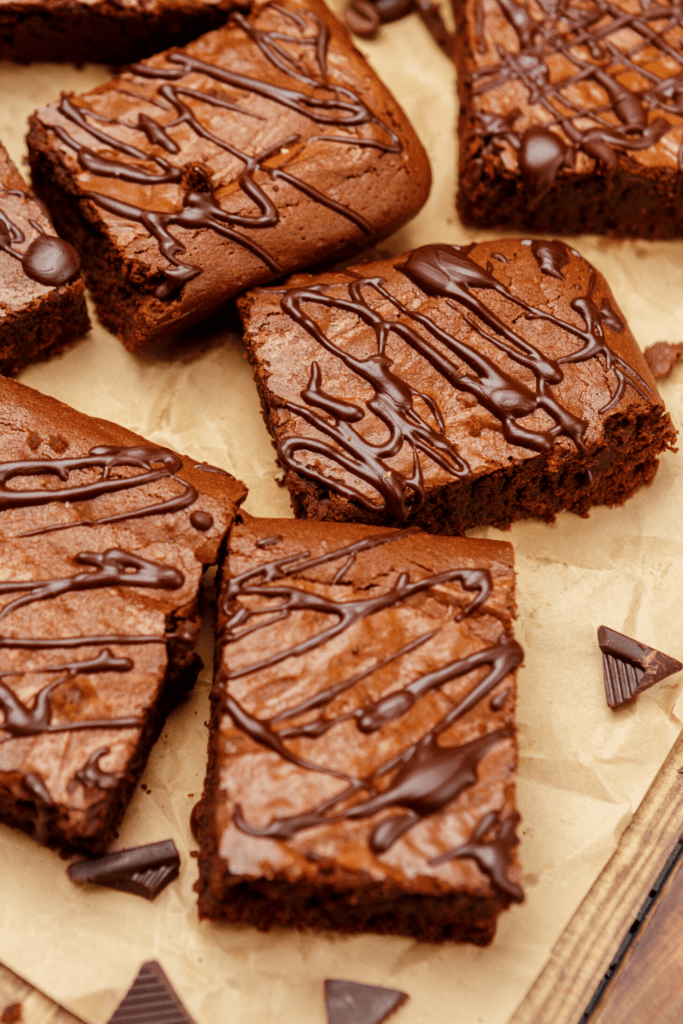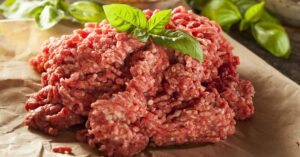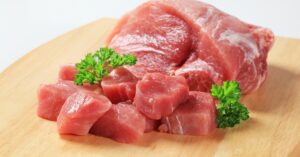
Want to know when your brownies are perfectly baked?
Whether you like moist, fudgy brownies or soft, cake-like brownies, we’re here to show you how to make the perfect treats every time!
You might think it’s basic – just bake the brownies in the oven according to the instructions and take it out when the time’s up. But, it’s not that simple.
Sometimes, even if you follow the instructions to a tee, you can still get undercooked or overcooked brownies.
So today, we’ll tell you the many ways you can tell when your brownies are done. Plus, we’ve got several tips for making the best brownies too!
How To Tell When Brownies Are Done
The first thing you need to consider is the type of brownies you’re making. Are they more cakey, or fudge-like? It’s important to know because the doneness of brownies relies on it!
Cake-like Brownies
If you’re baking cake-like brownies, check their appearance. Once you see the edges pulling away from the sides of the pan, it’s time to take them out of the oven.
You can also do the good old toothpick test. Here’s how: stick a toothpick into the center of your pan. If it comes out clean, they’re done.
Fudgy Brownies
Now onto fudgy brownies! Which, let’s be honest, are the better kind.
You can also use the toothpick test for these brownies, but you don’t want it to come out clean. That means it’s overcooked, dry, and crumbly.
Instead, what you want to see is a bit of brown crumbles on the toothpick. The crumbs should be moist, not wet. If the toothpick comes out with wet, goopy batter sticking to it, it needs more time to bake.
If you take it out at this point, you’ll get extremely wet brownies that you can’t even slice into squares.
Be mindful of chocolate chips, though. If you get a toothpick that’s all brown and wet, that may not mean it’s undercooked. Instead, you could have just stuck the toothpick into a melted chocolate chip!
So, if you’ve loaded your brownies with tons of chocolate chips, stick several toothpicks into the batter for more accuracy.
Now, many people recommend underbaking for even fudgier brownies. But there’s a fine line between uncooked and fudgy brownies, so you have to be careful!
Extremely Fudgy Brownies
Things are a little different too if you’re making extremely ooey gooey fudgy brownies.
Extra fudgy brownies require more oil, so the toothpick will always come out with brownie bits. Which makes checking for doneness is a little trickier, but nothing you can’t handle!
Quick Tip: If your extra fudgy brownies have a shiny gloss, they need a bit more time.
Uncooked batter has a shiny gloss to it, while cooked batter and melted chocolate are duller. So, all you need to do is to pay attention to how those brownie crumbs look. If it’s still glossy, it’s not cooked yet, but if it’s darker and matte, they’re done.

Should You Rely On Baking Time?
The baking time gives you a good sense of when your brownies will be done, but there are just way too many factors that can affect this. So yes, use the baking time as a guideline, but don’t rely on it solely.
For instance, your oven may be too hot or not hot enough. So, you must check your brownies at least a minute or two before the recommended baking time.
Another variable is the size of the pan you’re using. If it’s too large, your brownies will bake faster. Too small, and it needs more time than prescribed.
And did you know that even the material of the pan can affect the perfect baking time? Yep, if your pan is darker or made of glass, your brownies will cook faster. Light-colored and shiny pans conduct heat more evenly, so try to get those.
Also, don’t forget about residual heat. Don’t be too afraid about undercooking the brownies, because they will still cook for a few more minutes even after they’re out of the oven.
The Most Accurate Method
The best way to tell whether your brownies are done is by using a digital thermometer. Whether you’re making cakey or fudgy brownies, this is the best tool to check for doneness.
You want the brownies to have an internal temperature higher than 136 degrees Fahrenheit, at the least. That’s the temperature at which bacteria such as salmonella dies. So past that point, your brownies are safe for eating.
The brownies won’t set until they’re at 144 degrees, so you’ll want to keep baking until they reach this point. The most optimum temperature for perfectly fudgy brownies is 165 degrees.
But, if you want a cakey brownie, leave it in the oven until it reaches 210 degrees. That’s the internal temperature of a regular cake, so expect a moist and fluffy brownie at this point.
Tips & Tricks for Making the Best Brownies
Use high quality ingredients such as fresh butter and real vanilla. And since the chocolate is the star of the dish, be sure to use one of excellent quality.
Use room temperature ingredients. If the eggs and water are cold, the hot chocolate will shock them, and will form a strange texture.
Do not overbeat the eggs. This will incorporate too much air into the mixture, which will give it a more cakey consistency. Unless that’s what you want!
Wait for a few minutes before you combine your hot melted chocolate and egg mixture. You’re making brownies here, not chocolate-flavored scrambled eggs. So be patient – let the chocolate cool a little!
Rest the batter. If you have the time, let your batter rest in the fridge for a few hours or overnight. This will improve the texture and flavor of your brownies.
As I’ve said, the size of the pan is essential, so just use whatever is specified in the recipe. If you don’t have the proper size, adjust the baking time accordingly.
Grease the pan with margarine, butter, or cooking spray thoroughly. There’s nothing worse than having delicious brownies that you can’t take out of the pan!
Don’t bake two pans at once. The brownies need to be in the middle rack of the oven for even baking. So, sorry, but there’s no shortcut here.
Do not slice the brownies right after baking. I know, it’s hard to resist; but again, be patient! If you wait for several minutes, slicing clean cuts of brownies will be a breeze.
Sift the dry ingredients before adding them to your wet mixture. This will fluff them up, making it easier for all the ingredients to incorporate.















